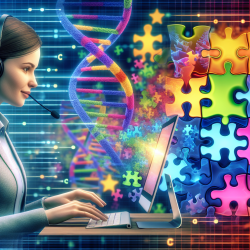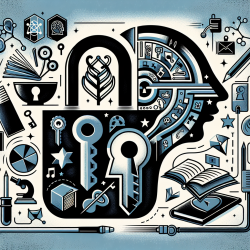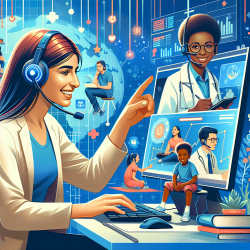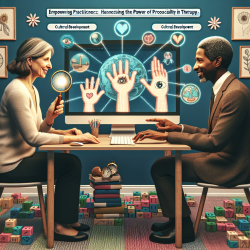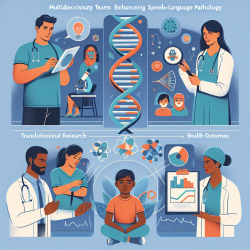Introduction
Autism Spectrum Disorder (ASD) is a complex neurodevelopmental condition with a significant genetic component. Recent research, such as the study "Genome-wide analysis of copy number variations identifies PARK2 as a candidate gene for autism spectrum disorder," highlights the role of genetic variations in ASD. This blog post aims to translate these findings into actionable insights for practitioners, especially those involved in speech-language pathology and online therapy services like those provided by TinyEYE.
Understanding the Research
The study conducted a genome-wide analysis of copy number variations (CNVs) in a Han Chinese population, identifying the PARK2 gene as a significant candidate associated with ASD. CNVs are structural changes in the genome that can result in the deletion or duplication of genetic material, potentially disrupting gene function. The research found that specific CNVs affecting the PARK2 gene were more prevalent in individuals with ASD compared to healthy controls.
Implications for Practitioners
Understanding the genetic underpinnings of ASD can enhance the effectiveness of therapeutic interventions. Here are some ways practitioners can leverage these insights:
- Personalized Interventions: Knowledge of a child’s genetic profile, including CNVs in the PARK2 gene, can inform personalized therapy plans that cater to specific needs and challenges.
- Early Identification: Genetic screening can aid in the early identification of children at risk for ASD, allowing for earlier intervention and potentially better outcomes.
- Collaboration with Geneticists: Speech-language pathologists and other therapists can collaborate with geneticists to understand the implications of genetic findings and integrate this knowledge into their practice.
Encouraging Further Research
While the study provides valuable insights, it also highlights the need for further research. Practitioners are encouraged to stay informed about ongoing genetic research and consider participating in studies that explore the genetic basis of ASD. This involvement can help bridge the gap between research and clinical practice, ultimately improving outcomes for children with ASD.
Conclusion
The identification of the PARK2 gene as a candidate for ASD underscores the importance of genetic research in understanding and treating neurodevelopmental disorders. By integrating genetic insights into therapeutic practices, practitioners can enhance their interventions and contribute to the evolving field of ASD research.
To read the original research paper, please follow this link: Genome-wide analysis of copy number variations identifies PARK2 as a candidate gene for autism spectrum disorder.
